The question of who was the first person to go to space is one that delves into the annals of history and the realm of human accomplishment. While many may immediately think of Yuri Gagarin, the Soviet cosmonaut, as the pioneering individual who ventured beyond Earth's atmosphere, the answer might not be as straightforward as it seems. As we dissect the complexities of space exploration and the race to conquer the cosmos, a closer examination reveals intriguing insights that challenge our assumptions and shed light on the intricacies of this groundbreaking moment in time.
Key Takeaways
- Yuri Gagarin, a Soviet cosmonaut, was the first person to orbit Earth.
- Gagarin's historic Vostok 1 mission in 1961 solidified his legacy.
- Tragically, Gagarin's career was cut short by a fatal plane crash in 1968.
- Gagarin's contributions to space exploration continue to inspire generations globally.
Early Life of Yuri Gagarin
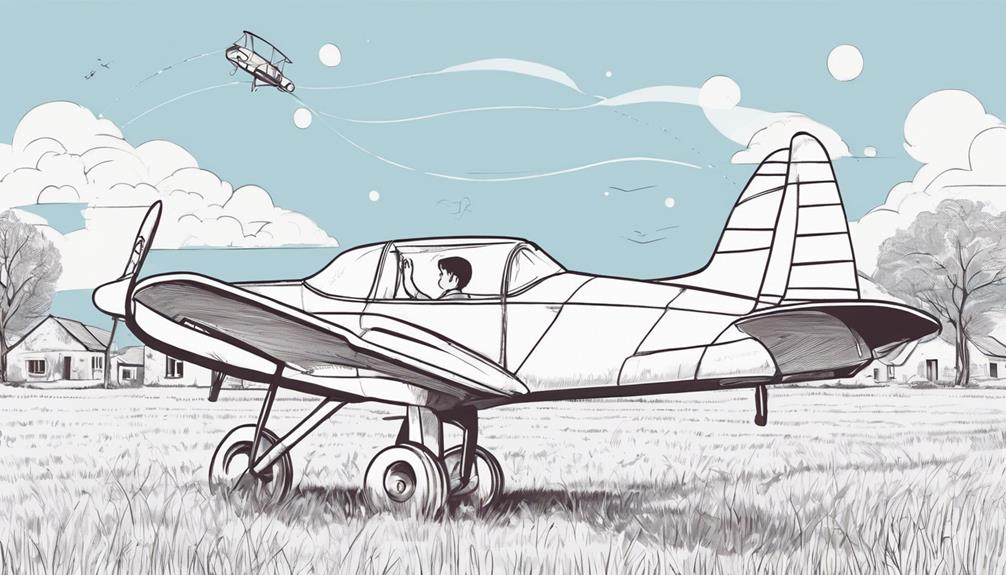
How did Yuri Gagarin's early life experiences shape his path towards becoming the first person to go to space? Born in Klushino, Russia, on March 9, 1934, Gagarin's childhood was marked by the challenges of German occupation during World War II. Despite these adversities, he pursued education at a metalworking trade school, displaying a commitment to learning and skill development. His entry into the Soviet Air Force further honed his capabilities, showcasing dedication and proficiency that would later serve him well in his endeavors.
Selected as one of the candidates for the first cosmonaut group, Gagarin's passion for aviation and his charismatic personality made him a standout choice for space exploration. His participation in rigorous training for the Vostok 1 mission underscored his readiness for the historic spaceflight that would etch his name in history. On April 12, 1961, Yuri Gagarin's monumental journey into outer space and Earth's orbit marked a pivotal moment in human exploration, solidifying his legacy as the first person to venture into space.
Education and Early Career
Yuri Gagarin's educational journey and early career choices played a pivotal role in shaping his path towards becoming the first person to venture into space.
- Metalworking Trade School: Gagarin's initial education began at a metalworking trade school, where he gained practical skills before transitioning to a different career path.
- Soviet Air Force: After completing his metalworking studies, Gagarin joined the Soviet Air Force, a decision that laid the foundation for his future involvement in space exploration.
- Vocational School and Soviet Air Cadet: Gagarin's pursuit of further education led him to enroll in a vocational school in Saratov, where he also volunteered as a Soviet air cadet. These experiences honed his aviation skills and prepared him for the challenges that lay ahead as a cosmonaut.
His passion for space exploration, combined with the rigorous training he underwent as part of the cosmonaut group, equipped Gagarin with the necessary knowledge and skills to make history with the Vostok 1 mission in 1961.
Soviet Air Force Service
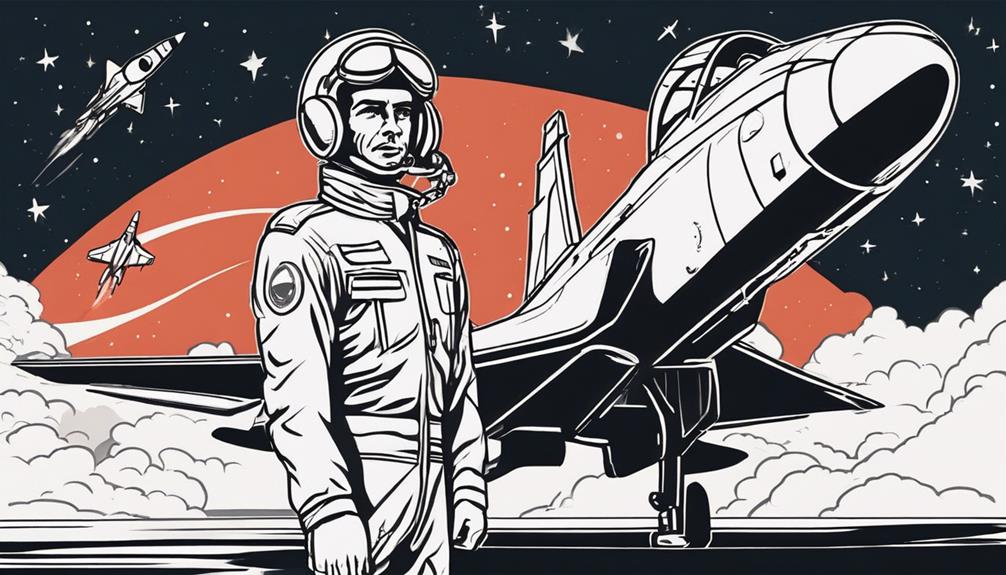
Yuri Gagarin's tenure in the Soviet Air Force as a lieutenant provided him with the foundational skills and discipline necessary for the challenges of space exploration. His service in the 769th Fighter Aviation Regiment honed his piloting abilities and instilled a strong sense of duty and dedication. These qualities were pivotal in his selection for the Vostok program and eventual historic space mission.
Early Space Exploration
Amidst the backdrop of the Cold War tensions and technological advancements of the mid-20th century, the Soviet Air Force played a pivotal role in shaping early space exploration through its rigorous training programs and strategic initiatives.
Key Points:
- Yuri Gagarin's Selection: Yuri Gagarin, a Soviet Air Force pilot, was chosen and trained for the Vostok space program, expressing his interest in space exploration in 1959.
- Historic Spaceflight: On April 12, 1961, Gagarin orbited the Earth aboard Vostok 1, marking a significant milestone in human history as the first person in space.
- Soviet Advancements: Gagarin's successful 108-minute mission showcased Soviet Union's prowess in space exploration, positioning them ahead in the space race.
Training and Selection
During the rigorous training and selection process within the Soviet Air Force service for the Vostok program, specific criteria were meticulously applied to select candidates for accelerated cosmonaut training. Yuri Gagarin, a Soviet Air Force lieutenant in the 769th Fighter Aviation Regiment, was chosen from a group of 154 pilots. As part of the Vanguard Six group, Gagarin underwent intensive physical training and parachute drills to prepare for space exploration. His keen interest in space, demonstrated by his early desire to join the Soviet space program, coupled with his background in aviation, positioned him as a prime candidate for the historic mission. Gagarin's successful orbit around Earth in 1961 not only marked a significant milestone in human history but also solidified his legacy as the first human in space.
Historic Space Mission
The historic space mission conducted under the Soviet Air Force Service marked a significant advancement in human exploration beyond Earth's atmosphere.
Key Points:
- Yuri Gagarin, a Soviet Air Force pilot, embarked on the Vostok 1 mission in 1961.
- Gagarin made history by becoming the first human to orbit Earth on April 12, completing one full orbit during the approximately 108-minute flight.
- Following the successful spaceflight, Gagarin was honored as the Hero of the Soviet Union for his remarkable achievement.
Yuri Gagarin's expedition aboard Vostok 1 not only showcased the Soviet Union's space capabilities but also opened the doors to a new era of space exploration, leaving an indelible mark on the history of human spaceflight.
Soviet Space Programme Overview

In response to the early successes of the United States in space exploration, the Soviet Union initiated its space program, which eventually led to Yuri Gagarin becoming the first human to orbit the Earth in 1961. Gagarin's iconic journey aboard the Vostok spacecraft marked a pivotal moment in space exploration history. This milestone not only propelled Gagarin to fame but also elevated the Soviet Union's position in the space race, showcasing their technological prowess and advancing their international prestige.
Following Gagarin's groundbreaking mission, the Soviet space program continued to make significant strides, achieving feats such as spacewalks and lunar missions. These accomplishments demonstrated the Soviet Union's commitment to pushing the boundaries of space exploration and expanding humanity's understanding of the cosmos. The success of the Soviet space program, epitomized by Gagarin's historic flight, remains a testament to human ingenuity and the drive to explore the unknown reaches of outer space.
Cosmonaut Selection and Training
The process of selecting cosmonauts for space missions involved a meticulous evaluation of candidates' physical abilities, mental acuity, and overall suitability for the challenges of spaceflight. Training for these missions was intense and comprehensive, focusing on preparing individuals for the unique conditions and emergencies they might face in space. The combination of stringent selection criteria and rigorous training laid the foundation for Yuri Gagarin's successful journey as the first person to go to space.
Cosmonaut Selection Process
Amidst the intense competition and meticulous evaluations, candidates vying for cosmonaut selection underwent rigorous training tailored to prepare them for the challenges of space exploration.
Key Points:
- Selection Criteria:
- Candidates were scrutinized based on physical fitness, mental strength, and adaptability to the demands of space travel.
- Training for Vostok 1 Mission:
- Rigorous training programs were specifically designed to prepare cosmonauts for the complexities of the Vostok 1 mission, focusing on both physical and psychological readiness.
- Thorough Evaluations:
- The selection process involved comprehensive evaluations to ensure that the chosen individuals possessed the necessary skills and capabilities to handle the rigors of space exploration effectively.
Training for Space Missions
During the rigorous selection process and specialized training programs for cosmonauts, meticulous attention is placed on evaluating candidates' physical, mental, and adaptability attributes essential for space missions. Training for the Vostok 1 mission involved simulations, centrifuge tests, and preparation for the historic spaceflight. Cosmonauts like Yuri Gagarin underwent physical and parachute training to ensure they could handle the challenges of space exploration. The table below outlines some key aspects of cosmonaut training for space missions:
| Training Aspect | Description | Importance |
|---|---|---|
| Physical Training | Focuses on enhancing endurance and strength | Vital for space travel |
| Parachute Drills | Essential for safe return to Earth | Crucial for emergencies |
| Simulations | Mimic space conditions and scenarios | Prepares for real missions |
| Mental Preparedness | Psychological resilience and focus | Critical for high-stress situations |
| Adaptability | Ability to adjust to varying conditions | Ensures mission success |
Historic Vostok 1 Mission
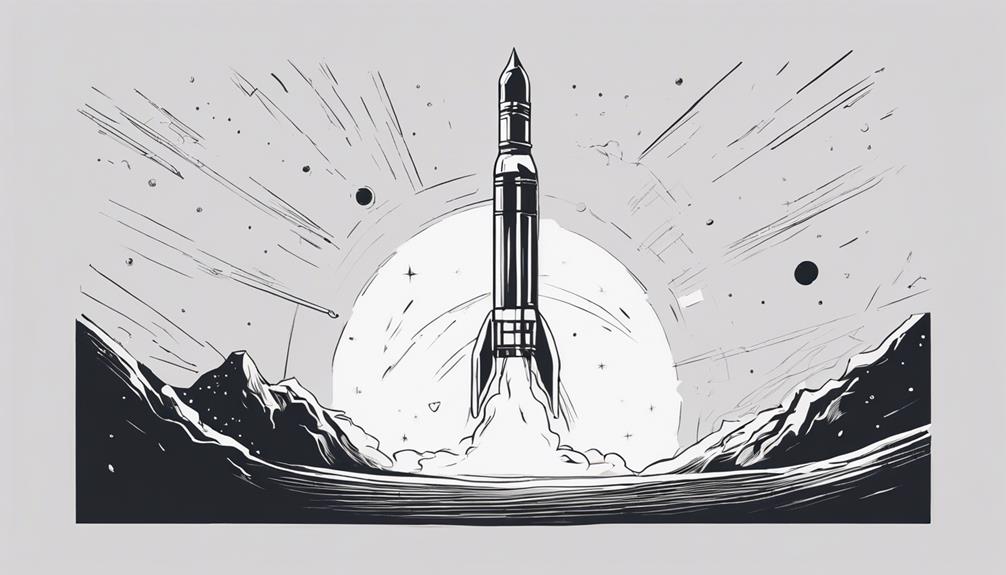
In the annals of space exploration, the historic Vostok 1 Mission stands as a pivotal moment that forever altered the course of human achievement beyond Earth's bounds. Yuri Gagarin's journey aboard the Vostok 1 spacecraft marked a monumental leap for humanity in the realm of space exploration.
Key Points:
- First Orbit: Gagarin became the first human to orbit the Earth, completing one full orbit during the Vostok 1 mission on April 12, 1961.
- Space Pioneer: With his call sign 'Kedr,' Gagarin's successful flight not only demonstrated the feasibility of human space travel but also positioned him as a trailblazer in the field of astronautics.
- Impact on Human Space Exploration: The Vostok 1 mission's success not only inspired future generations of astronauts but also laid a solid foundation for the advancements in space exploration that followed, setting the stage for further significant achievements beyond Earth's atmosphere.
Post Vostok 1 Flight Events
Following Yuri Gagarin's historic Vostok 1 flight, a series of pivotal events unfolded in his post-spaceflight career, shaping his legacy and impact on the future of space exploration. Awarded the prestigious title of Hero of the Soviet Union, Gagarin's achievement elevated him to a national symbol of Soviet excellence. Transitioning into a role as the deputy training director at the Cosmonaut Training Centre, he contributed significantly to the preparation of future cosmonauts, embodying leadership in the field of space exploration.
Moreover, Gagarin's election as a deputy of the Soviet of the Union underscored his profound influence in Soviet society, showcasing the immense respect and admiration he garnered. Tragically, his promising post-spaceflight career was cut short by a fatal plane crash in 1968. Despite this untimely end, Gagarin's successful orbit of the Earth remains a cornerstone of human history and a catalyst for advancements in space exploration. His legacy continues to inspire generations of scientists, astronauts, and dreamers worldwide.
Personal Life Insights

Yuri Gagarin's personal life provides valuable insights into the character and experiences of the first person to go to space.
Insights into Yuri Gagarin's Personal Life:
- Early Education and Career Development:
- Gagarin's initial education at a metalworking trade school showcases his practical skills and interest in technical fields, which later contributed to his success in the Soviet Air Force.
- Military Background and Cosmonaut Selection:
- Transitioning from the metalworking trade school to the Soviet Air Force, Gagarin's military background equipped him with discipline and determination, qualities that were crucial for his selection as part of the first cosmonaut group.
- Character Traits and Training Regimen:
- Gagarin's renowned charisma, warm smile, and friendly demeanor endeared him to many. These traits, combined with his rigorous training for the Vostok 1 mission, exemplified his dedication and preparedness for the historic spaceflight.
Yuri Gagarin's Tragic Death
Yuri Gagarin's tragic death in a plane crash on March 27, 1968, marks a poignant moment in the history of space exploration. The circumstances surrounding the crash, including the subsequent investigations into its cause, have sparked ongoing debates and speculation within the aerospace community. Gagarin's untimely passing not only cut short the life of a pioneering cosmonaut but also left a legacy of unanswered questions that continue to intrigue and haunt those interested in his extraordinary achievements.
Gagarin's Fatal Plane Crash
Regrettably, the aviation community faced a devastating loss on March 27, 1968, when Yuri Gagarin, the first person to journey into space, met a tragic end in a fatal plane crash near Kirzhach, Russia.
Key Points:
- Gagarin was piloting a MiG-15 aircraft when the crash occurred.
- The accident also claimed the life of Gagarin's flight instructor, Vladimir Seryogin.
- Official reports attributed the crash to spatial disorientation, resulting in an uncontrolled descent.
This tragic event not only ended the life of a pioneering astronaut but also underscored the risks associated with aviation and space exploration. Gagarin's legacy, overshadowed by this untimely demise, serves as a poignant reminder of the perils inherent in pushing the boundaries of human exploration.
Investigation Into Cause
Following the tragic plane crash that claimed the lives of Yuri Gagarin and his flight instructor Vladimir Seryogin, investigations into the cause of the accident delved into potential factors such as weather conditions, human error, and mechanical failure. The uncertainty surrounding Gagarin's fatal plane crash during a routine training flight near Kirzhach has sparked various theories. The table below summarizes the key areas of investigation:
| Investigative Factors | Description |
|---|---|
| Weather Conditions | Examination of weather patterns at the time of the crash. |
| Human Error | Analysis of actions or decisions that may have contributed to the accident. |
| Mechanical Failure | Inspection of the aircraft's systems and components for malfunctions. |
Recognitions: Medals and Honors

Earning prestigious medals and honors, the first person to go to space, Yuri Gagarin, was recognized for his groundbreaking achievements in space exploration.
Key Recognitions:
- Hero of the Soviet Union: Gagarin was awarded the title of Hero of the Soviet Union, the highest honor in the Soviet Union, for his historic spaceflight aboard Vostok 1.
- Order of Lenin: In recognition of his exceptional contributions to space exploration, Gagarin received the Order of Lenin, the most esteemed civilian decoration in the Soviet Union.
- Gold Star Medal: Gagarin was honored with the Gold Star Medal for his service to the state and his pivotal role in the success of the Vostok 1 mission.
These accolades underscored Gagarin's significant impact on space exploration. Additionally, commemorative medals and stamps were issued by the Soviet Union to celebrate Gagarin's pioneering journey into space. His legacy endures through monuments, museums, and educational establishments dedicated to preserving and honoring his groundbreaking accomplishments.
Tributes to Yuri Gagarin
Yuri Gagarin's historic flight on April 12, 1961, not only marked a significant milestone in human space exploration but also had a profound global impact, inspiring generations of scientists, astronauts, and enthusiasts worldwide. The tributes paid to Gagarin through annual celebrations, dedicated schools and monuments, prestigious awards, and commemorative stamps and coins reflect the enduring legacy of his pioneering journey into space. Museums, exhibitions, and documentaries continue to showcase Gagarin's life and achievements, ensuring that his contributions to space exploration are remembered and celebrated for years to come.
Gagarin's Historic Flight
The commemoration of Gagarin's historic flight serves as a testament to the monumental impact his journey had on the realm of space exploration and human achievement.
- Symbol of Courage: Yuri Gagarin's bravery as the first person in space exemplified the daring spirit of early space exploration.
- Technological Advancement: The successful orbit around the Earth in the Vostok 1 spacecraft showcased Soviet space achievements and technological prowess.
- Historical Significance: Gagarin's venture not only made him an international hero but also marked a pivotal moment in space exploration history, inspiring advancements and ambitions for future space missions.
This pivotal moment in 1961 set the stage for a new era of human exploration beyond our planet's boundaries.
Global Impact of Gagarin
Unquestionably, the global impact of Yuri Gagarin's pioneering spaceflight resonates profoundly in the annals of human history. As the first human in space, Gagarin's orbit around the Earth not only marked a monumental achievement for Soviet space advancements but also ignited a wave of international impact. Tributes to Gagarin in the form of monuments, celebrations, and educational programs are evidence of his enduring legacy in the realm of human space exploration. The International Day of Human Space Flight on April 12th stands as a testament to Gagarin's historic journey and serves as a reminder of the milestones humanity has reached in space. Gagarin's contribution to human spaceflight continues to inspire and shape the future of space exploration globally.
Statues, Monuments, and Murals
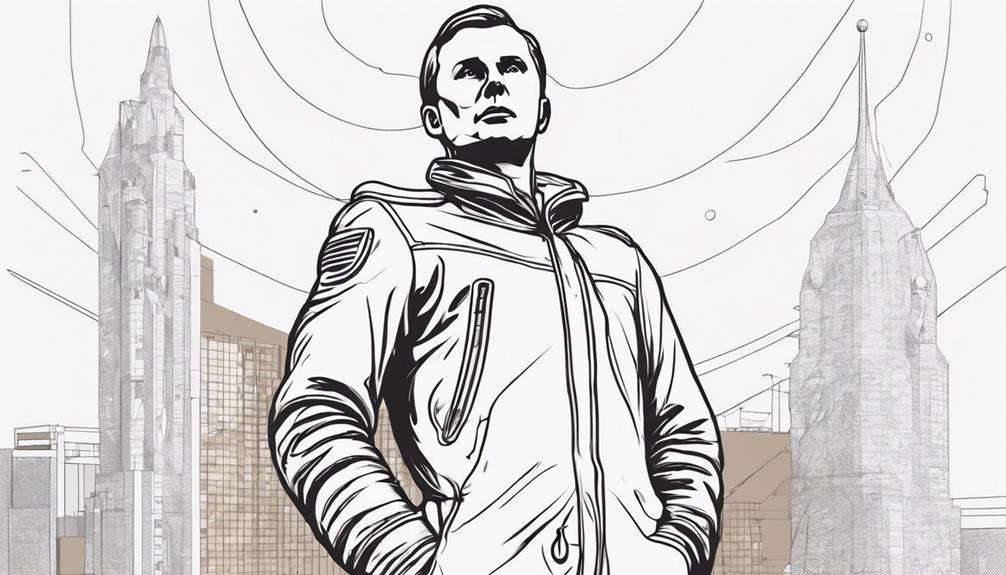
Numerous statues, monuments, and murals worldwide pay homage to the first person to go to space, Yuri Gagarin, highlighting his historic space journey and enduring influence on space exploration. These artistic tributes are not only a celebration of Gagarin's achievement but also serve as educational tools, reminding current and future generations of his significant contribution to space exploration.
Key Points:
- Global Representation: Statues, monuments, and murals honoring Yuri Gagarin can be found in multiple countries, including Russia, Slovakia, and the United Kingdom, showcasing the international recognition of his groundbreaking spaceflight.
- Unique Installations: The Yuri Gagarin statue in London's Greenwich Park holds historical significance as the first statue of an individual in the park's history, underlining the exceptional acknowledgment of Gagarin's accomplishment.
- Artistic Tributes: Murals depicting Gagarin's spaceflight and legacy adorn buildings in various cities globally, acting as visual narratives of his journey and emphasizing his lasting impact on space exploration.
Commemorating the 50th Anniversary
Paying tribute to the historic milestone of Yuri Gagarin's first human orbit of Earth on April 12, 1961, the 50th-anniversary commemorations serve as a global acknowledgment of his pioneering achievements in space exploration. Yuri Gagarin's mission aboard Vostok 1, which lasted 108 minutes, marked a significant leap for humankind into the cosmos. His successful spaceflight not only made him an international hero but also symbolized the remarkable advancements of Soviet space achievements during that era. The 50th anniversary celebration is a testament to Gagarin's pioneering spirit and his invaluable contributions to space exploration, inspiring generations of astronauts and scientists worldwide.
To further honor this momentous occasion, events, exhibitions, and tributes are being organized globally, highlighting Gagarin's legacy and the profound impact of his space mission. Below is a table showcasing some key aspects of the 50th-anniversary commemorations:
| Event | Location |
|---|---|
| Yuri's Night | Worldwide |
| Gagarin Exhibition | Moscow, Russia |
| Space Symposium | Washington D.C. |
Additional Notes and References
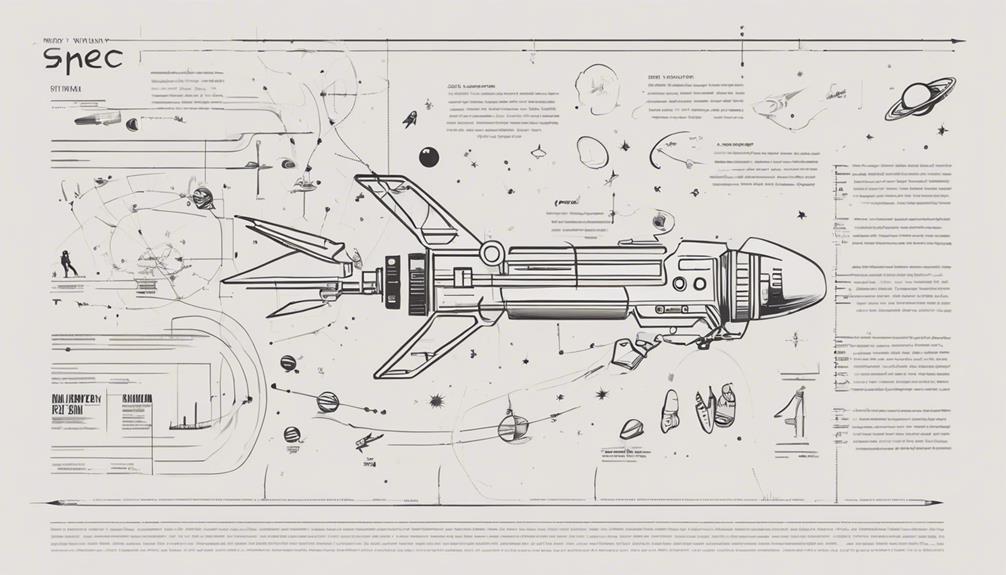
Upon further examination of the historical context surrounding Yuri Gagarin's groundbreaking space mission, notable references and supplementary information emerge, shedding light on the intricacies of this pivotal event.
- FAI Certification: Despite initial doubts and controversies surrounding Yuri Gagarin's status as the first human to journey into space, his spaceflight records were eventually certified and recognized by the Fédération Aéronautique Internationale (FAI), affirming his historic achievement.
- Call Sign 'Kedr': During the Vostok 1 mission, Yuri Gagarin used the call sign 'Kedr' while communicating with ground control, adding a personal touch to his journey and becoming an iconic identifier in the history of human spaceflight.
- Human Spaceflight Milestone: Gagarin's successful orbit aboard the Vostok spacecraft marked a significant milestone in space exploration history, demonstrating the capability of humans to venture beyond Earth's atmosphere and inspiring generations of future astronauts and space explorers.
Frequently Asked Questions
Who Went to Space First and Died?
The first astronaut to venture into space and face a tragic fate was Soviet cosmonaut Yuri Gagarin. His pioneering mission in 1961 marked a significant leap in space exploration. However, his untimely death in a plane crash in 1968 highlighted the dangers early space pioneers faced. Gagarin's story is a reminder of the sacrifices made by these forgotten heroes in the pursuit of advancing our understanding of the cosmos.
Who Was the Second Person to Go to Space?
The second astronaut to venture into space played a crucial role in the historic mission that marked a significant milestone in space exploration during the intense space race era. This Soviet cosmonaut's orbital flight contributed to advancements in space travel, paving the way for subsequent missions. The mission reflected the rapid progress in space technology and the escalating competition between nations in the realm of space exploration.
Who Was the First Girl in Space?
The first girl in space was Valentina Tereshkova, who made history by piloting the Vostok 6 spacecraft in 1963. Her remarkable journey marked a significant milestone in space exploration, showcasing the capabilities of female astronauts and the importance of gender equality in STEM fields. Tereshkova's pioneering space mission paved the way for future generations of women to embark on space missions, leaving an indelible mark on space history.
Who Was the First Person to Go to the Moon?
The first person to go to the Moon was Neil Armstrong. Neil Armstrong made history through the Apollo 11 mission's successful moon landing on July 20, 1969. His iconic words upon stepping onto the lunar surface, 'That's one small step for man, one giant leap for mankind,' symbolized a monumental achievement in space exploration. Alongside Buzz Aldrin, Armstrong piloted the lunar module, marking a significant milestone in the space race and advancing human understanding of the cosmos.
Conclusion
Yuri Gagarin's historic journey to space not only marked a monumental achievement in human history but also ignited a new era of space exploration. His bravery and pioneering spirit have inspired generations of astronauts and fueled the collective imagination of humankind. The impact of Gagarin's voyage transcends time and space, serving as a testament to the boundless potential of human ingenuity and the relentless pursuit of discovery. His legacy will forever shine as a beacon of hope and inspiration for all.
